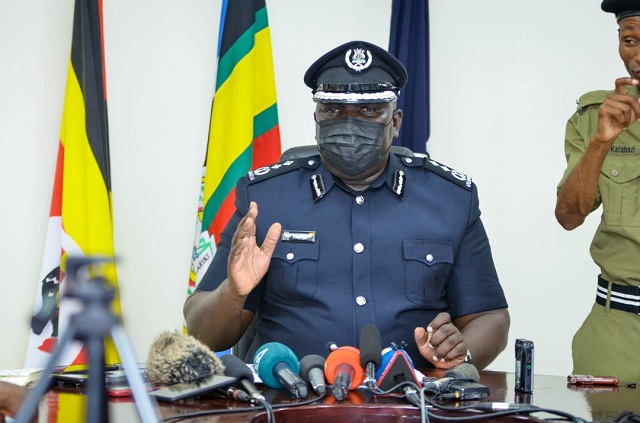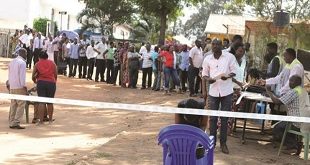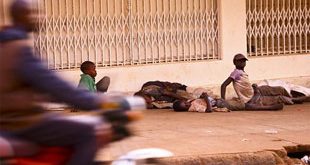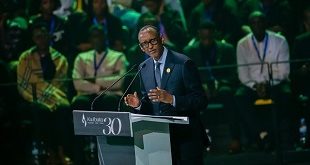
COMMENT | Olivia Nalubwama | “The rights of our people are supreme, and can never be compromised, and full accountability must be there…,” said President Yoweri Museveni on August 11 at the swearing-in of 16 newly-appointed judges.
Such fine words from the fountain of honour on the privilege of being a citizen. Yet, we, citizens of Uganda, find ourselves sinking steadily in the quicksand of mockery. Linking the last two articles about the deaths of 12 blind schoolgirls and the alarming boda boda epidemic, our lives seem quite impotent in this republic.
It is two years since the November 18-19, 2020 extrajudicial killings when security forces in quelling riots sparked off by the arrest of then presidential candidate Robert Kyagulanyi/Bobi Wine, gunned down more than 50 people.
A Daily Monitor investigation established that many victims were shot in the stomach and neck and detailed witness accounts of security officers firing indiscriminately at people. In a surprise development, on December 8, 2021, the army court convicted two soldiers for shooting dead three people during the riots. The court sentenced one soldier to life imprisonment; the second soldier received 35 years’ imprisonment.
Oddly, the families of the victims were completely unaware of the court process reported by the Daily Monitor. On November 29, 2020, the president addressed the country and defended the security forces’ use of live ammunition to quash the riots. Museveni said the security forces were dealing with rioters who apparently had external funding to destabilize the country. However, he ordered police to investigate the shootings and prosecute officers found culpable for the killings.
In May this year, police spokesperson Fred Enanga placidly announced that the police had concluded its investigations into the killings and readied a report. The Daily Monitor revealed the report indicated that only 11 of those shot dead were ‘rioters’- 42 were felled by ‘stray bullets.’
This contradicted Museveni’s assertion in November 2020 that 32 of those killed were rioters. Eleven versus 32 is quite a gap. This report, dear reader, should you, too, want to read it that you, too, may draw your own scintillating conclusions, is accessible in two simple steps.
According to Enanga, step one, write to the Inspector General of Police (IGP) to request a copy of the report; step 2, pay Shs 60,000 to Shs 70,000 for the report. Dear reader, if you can find it within yourself to acquiesce to those two steps and do access the report, be rather Ugandan about it – pirate that report. Make bootleg copies complete with subtitles.
Why is a police report about the November 2020 riots/killings for sale? Were the stray bullets that killed unarmed civilians, innocent bystanders also for sale? Will the report answer one of Museveni’s questions – “What was the original purpose of those bullets before they became ‘stray’”?
Will it bear the names of the officers who pointed their guns dead straight into shops and opened fire? Will it show the faces of those who held these guns and show how they sleep at night, without a care for the lives shattered by November 2020?
Where is the official vanguard of human rights – the Uganda Human Rights Commission (UHRC) – to walk us through the essence of the price tag?
Yet, when we turn to UHRC to advocate for the rights of Ugandans, we catch UHRC flirting crudely with coercive power. UHRC chairperson Mariam Wangadya on August 1 during a training for senior army officers sympathized with the gallant soldiers burdened with a violent citizenry.
She highlighted two incidents; civilians raiding a police post in Pader and the killing of a police officer by thugs. She empathized, “I have learnt that our men and women in uniform are inhibited from effectively defending themselves against violent attacks because of laws like the Prevention and Prohibition of Torture Act, which provides for individual liability. I think it is time for us to review the efficacy of these laws.”
Calm yourself – this is not to disparage the work of the security forces and, therefore, those killed in the line of duty. Those that seek to defend Wangadya might recall her statement before parliament’s human rights committee when she contended that the media was deliberately exaggerating torture cases in the country.
Now she might be right; what do we privileged citizens unencumbered by the reality of torture know of the pain of a nail forcibly torn out of a finger? When Wangadya sympathizes with armed officers prevented, by law, from maiming and killing civilians, we wonder whose human rights the UHRC protects.
We juxtapose her remarks with Museveni’s comments to the judges that the rights of the people are supreme and come away more impotent. Who bears the greater responsibility for restraint and, therefore, the choice between shoot to kill or shoot to maim? We could be so bold as to hope for answers since our reality produces more discomfiting questions than we prefer to admit.
In the absence of answers, perhaps making money from the killings is the lesser evil. May the police report sell like a hot cake, and may the pirated copies bring a cure for our impotence!
*******
 Olivia Nalubwama is a “tayaad Muzukulu, tired of mediocrity and impunity” smugmountain@gmail.com
Olivia Nalubwama is a “tayaad Muzukulu, tired of mediocrity and impunity” smugmountain@gmail.com
THIS ARTICLE FIRST PUBLISHED IN THE OBSERVER
 The Independent Uganda: You get the Truth we Pay the Price
The Independent Uganda: You get the Truth we Pay the Price


